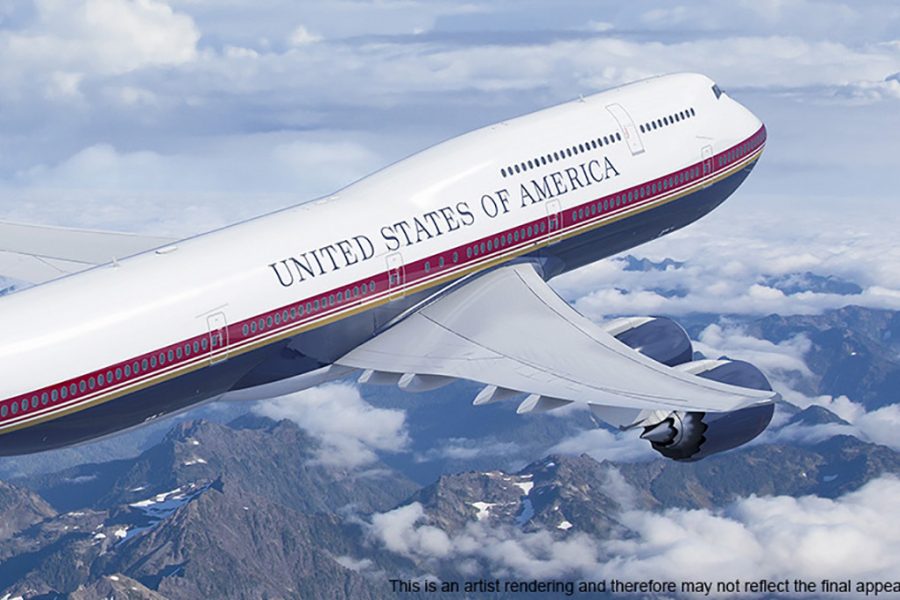The first 747-8 aircraft has begun the modification process to become a VC-25B, or the next Air Force One.
The aircraft, which were originally bought by a Russian airline but never delivered, were ferried to a Boeing modification facility in San Antonio, Texas, from a “boneyard” in California in spring 2019. The modification work began on Feb. 25.
Since arriving at the Boeing facility, the company prepared the aircraft by removing commercial interiors, engines, auxiliary power units, and other system components, according to a March 11 Air Force Life Cycle Management Center release.
The modification process will include cutting out parts of the aircraft’s skin and structure in the forward and aft lower lobes to install new “superpanels” with structural upgrades and cutouts for doors, according to the release. Other modifications will include electrical power upgrades, a mission communication system, a medical facility, “executive” interior, and autonomous ground operations capabilities, according to the Air Force.
During the process, Boeing installed a jack and crib mechanism to reduce stress to the aircraft during installation, the release states. The company is doing a daily foreign object debris sweep through the facility and aircraft to ensure there’s no FOD inside the airplanes, a problem that has plagued the company’s KC-46 tanker.
The service expects to deliver the two VC-25Bs in 2024 to replace the two existing VC-25As, and the aircraft are expected to serve for 30 years.
While the modification process does not detail the new livery of the aircraft, Pentagon budget documents and models seen at the White House show the aircraft painted red, white, and blue instead of the signature light blue and white that has been on Air Force One for decades.
The project is expected to cost about $5.2 billion overall, according to a 2019 Defense Department acquisition report. The Air Force’s fiscal 2021 budget request calls for $800 million in research, development, test, and evaluation funding, building on $757.9 million in 2020 and $713.6 million in 2019.
